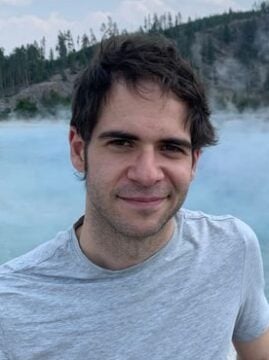Venue: Centre Broca

Manuel Valero
Postdoctoral fellow in Buzsaki lab
NYU Neuroscience Institute, New York University
https://valeroneuroscience.com/
https://twitter.com/MValero87
Invited by Mario Martin-Fernandez
Neurocentre Magendie (Team: Herry)
Title
The role of inhibition in hippocampal coding
Summary
The fundamental computation a single neuron performs is to integrate incoming excitatory and inhibitory inputs to decide whether to fire an action potential and feedback its activity into the network. Investigation of this synaptic computation requires access to the neuron subthreshold dynamics, whose state-of-art methodologies have remained unaltered for decades and are unrealistic for cell assemblies and behaving animals.
These experiments disclosed a reciprocal interaction between inhibition and excitation along the place fields of CA1 and demonstrated that the same exact perturbation can bring about opposite responses during exploration and transient SPW-Rs.
Biosketch
– to unveil the fundamental rules that govern cell recruitment during memory consolidation. I discovered the network motifs underlying the cell–selective firing during the hippocampal sharp– wave ripples, and how deviations from balanced excitatory–inhibitory dynamics lead to (or rescue from) memory deficits. These results were published as two scientific articles (Nature Neuroscience [2015] and Neuron [2017]) and a review (Current Opinion of Biology [2018]) as the first author contributor. For my postdoctoral period (2018–2022) and funded by the EMBO and the HFSP I established my own research lines in the laboratory of György Buzsáki (NYU, US) on high–resolution optogenetics and novels promotor–specific transgenic strategies. I described a unique population of inhibitory interneurons, uniquely active during sleep down–states and able to gate memory consolidation (Nature Neuroscience [2021]), and I created a method to probe the subthreshold dynamics of hundreds of cells in freely moving animals optogenetically. With this method, I demonstrated that place cells emerge by transient disinhibition, a long–standing question in our field (Science [2022], as the first author and corresponding author; and Cell Reports [2022]). Over the course of my career, I have published 26 articles, including 7 as the first author and 3 as the corresponding author, mentoring 7 PhD on the process.

